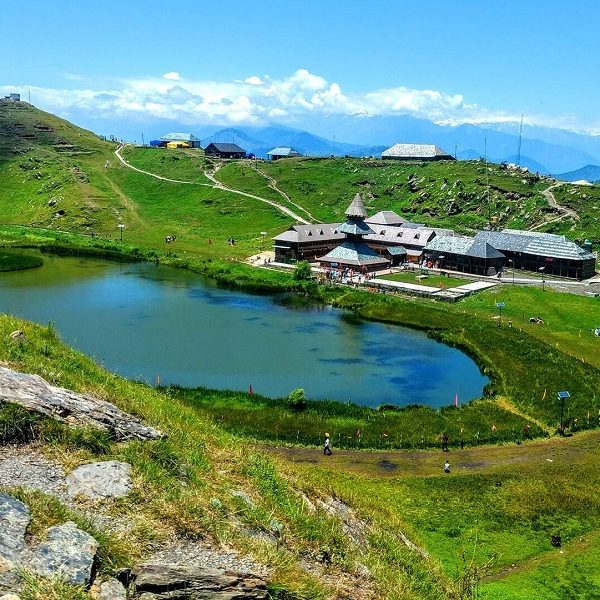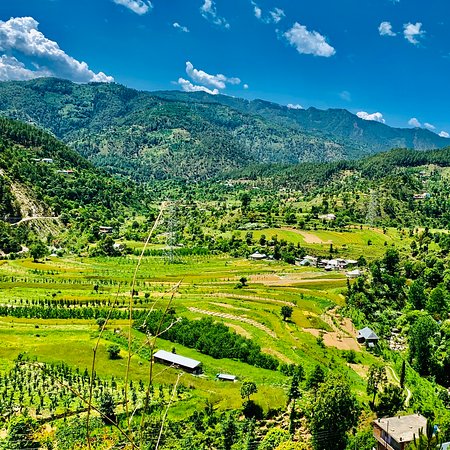From
Duration
Tour Type
Overview
India is a country with a rich cultural heritage and a history that dates back thousands of years. The land of gods and goddesses, India is dotted with numerous temples, each with its unique story and significance. Among the many temples that grace the country, Trilokinath Temple in Mandi is a prominent one. Situated at an elevation of 2,800 meters above sea level, the temple is a must-visit for those seeking spiritual solace and a glimpse into India’s rich history.
Table of Contents
ToggleHistory of Trilokinath Temple
Trilokinath Temple is dedicated to Lord Shiva, one of the principal deities of Hinduism. The temple is believed to be around 2,000 years old and has undergone several renovations over the years. The temple’s architecture is a fine example of the blend of Indian and Tibetan styles. The temple’s exterior is adorned with intricate wood carvings, and its interiors feature beautifully painted murals.
According to local legends, the temple was established by the Pandavas during their exile. They discovered a Shivling (a symbol of Lord Shiva) at the site and decided to build a temple around it. The temple has since been a significant pilgrimage site for devotees of Lord Shiva.
The Best Time to Visit Trilokinath Temple
Trilokinath Temple is situated in the Lahaul and Spiti district of Himachal Pradesh and is open to visitors all year round. However, the best time to visit the temple is from June to October when the weather is pleasant and the temple’s surroundings are lush green. The monsoon season brings rain and occasional landslides, so visitors should exercise caution when traveling during this period. The winter season, from November to February, brings snow and biting cold, making it difficult to access the temple.
Timings and Rituals at Trilokinath Temple
Trilokinath Temple is open from 6 am to 6 pm, and visitors can attend the daily prayers and rituals conducted by the temple priests. The temple follows a strict dress code, and visitors are required to dress modestly and cover their heads before entering the temple premises.
The temple has two entrances, one for men and the other for women. The main shrine houses the Shivling, which is believed to be a self-manifested form of Lord Shiva. The temple’s priests perform the abhishek (holy bath) of the Shivling daily, which is a ritual of pouring milk, honey, and water on the Shivling to purify it.
Visitors can also witness the evening aarti (prayer) at the temple, where the priests offer lamps and flowers to Lord Shiva. The aarti is a mesmerizing experience, and the temple’s serene surroundings add to the spiritual ambiance.
Other Attractions near Trilokinath Temple
Trilokinath Temple’s location offers visitors an opportunity to explore the natural beauty of the region. The temple is situated near the confluence of the Chenab and Chandra Bhaga rivers, making it an ideal spot for nature lovers.
One of the most popular activities near the temple is trekking. The region offers several trekking routes, including the Baralacha-La Trek and the Hamta Pass Trek, which provide stunning views of the surrounding Himalayan peaks. The temple is also close to the Rohtang Pass, which offers panoramic views of the surrounding valleys and mountains.
Another popular attraction near the temple is the Udaipur Palace, which is around 25 kilometers from the temple. The palace, also known as the Markula Devi Temple, is dedicated to the goddess Markula Devi and is known for its intricate wood carvings and stunning views of the surrounding valleys.
How to Reach Trilokinath Temple
Trilokinath Temple is located in the remote Lahaul and Spiti district of Himachal Pradesh. Despite its remote location, the temple is well connected to major cities in the region.
By Air: The nearest airport to Trilokinath Temple is Bhuntar Airport in Kullu, which is around 200 kilometers away. From the airport, visitors can hire a taxi or take a bus to Mandi, which is around 70 kilometers away from the temple.
By Train: The nearest railway station to Trilokinath Temple is Jogindernagar Railway Station, which is around 50 kilometers away. From the railway station, visitors can hire a taxi or take a bus to Mandi and then to the temple.
By Road: Trilokinath Temple is well connected by road to major cities in the region. Visitors can take a bus or hire a taxi from Mandi or Kullu to reach the temple. The journey to the temple can be a bit challenging due to the narrow and winding roads, but the breathtaking views of the Himalayas make it worth the effort.
Tips for Visitors
Visitors to Trilokinath Temple should keep the following tips in mind to ensure a hassle-free visit:
- Dress modestly and cover your head before entering the temple premises.
- Do not carry any leather items or footwear inside the temple.
- Be prepared for cold weather, especially during the winter season.
- Follow the instructions of the temple authorities and be respectful of the temple’s religious significance.
- Carry sufficient cash, as there are no ATMs or banks in the vicinity of the temple.
A Must Visit Spot for Every Tourist Visiting Mandi
Trilokinath Temple is a spiritual and historical gem in Mandi, Himachal Pradesh. The temple’s rich history, stunning architecture, and serene surroundings make it a must-visit for those seeking spiritual solace and a glimpse into India’s rich culture. The best time to visit the temple is from June to October, and visitors can witness daily prayers and rituals conducted by the temple priests. The temple’s location also offers visitors an opportunity to explore the natural beauty of the region, with several trekking routes and other attractions nearby. Whether you are a spiritual seeker or a nature lover, Trilokinath Temple is a place you cannot miss during your visit to Mandi.
Included/Exclude
Tour Plan
Nearby Places
Review Scores
Unlock your dream destination! Fill our travel lead form and get personalized itineraries tailored just for you. Start your adventure now.




